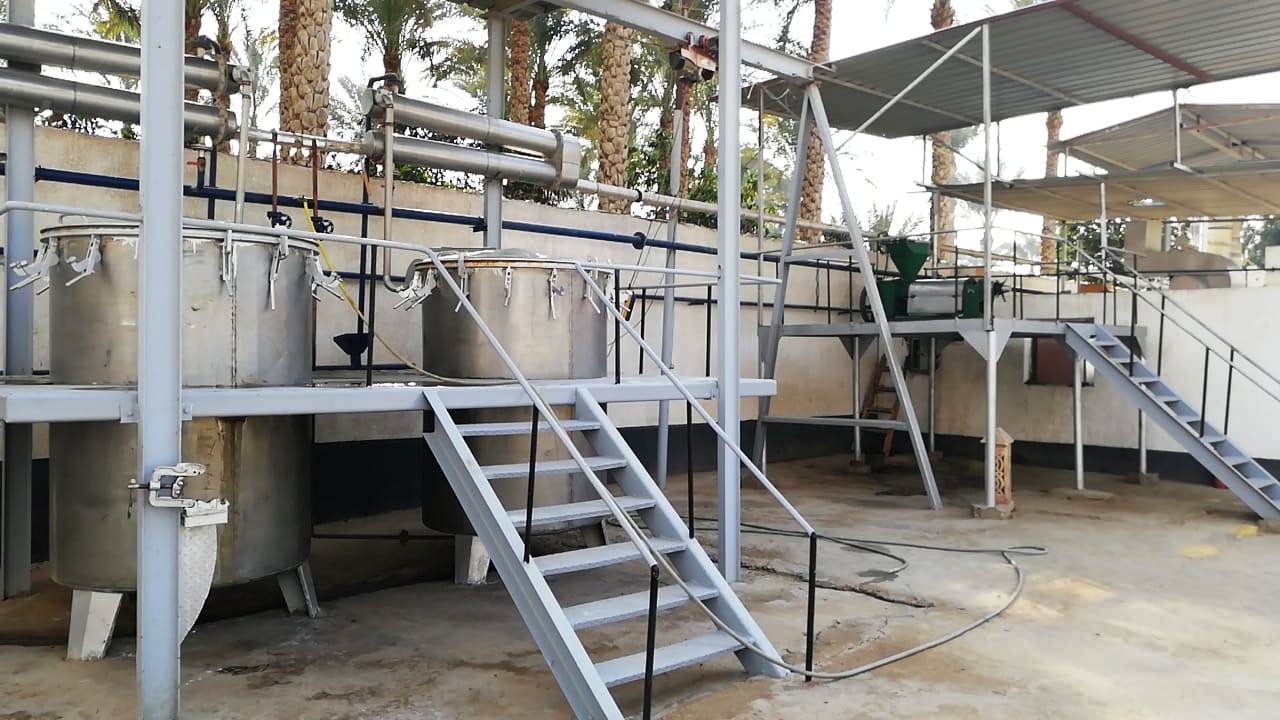Caraway Seeds Carum carvi Essential Oil
Login to view prices
Common name: Caraway
Latin name: Carum carvi L.
Family: Apiaceae (Umbelliferae)
Other names: Engl.: caraway, annual caraway, caraway seed. Deu.: Kümmel, Gemeiner Kümmel, Wiesen-Kümmel. Suom.: kumina. Sven.: kummin. Fran.: anis des vosges, carvi, cumin des prés
Botanical Origin:
Common name: Caraway
Latin name: Carum carvi L.
Family: Apiaceae (Umbelliferae)
Other names: Engl.: caraway, annual caraway, caraway seed. Deu.: Kümmel, Gemeiner Kümmel, Wiesen-Kümmel. Suom.: kumina. Sven.: kummin. Fran.: anis des vosges, carvi, cumin des prés
Description:
Caraway, Carum carvi L., is a slender annual or biennial herb native to Asia Minor and Europe and naturalized in North America. The plant, reaching a height of approximately one meter, has long been prized as a flavoring agent or condiment. Caraway fruits (commonly called seeds) are actually the mericarps of ripe fruit borne in compound umbels.
In the seedling year, biennial plants resemble carrots, growing about 20 cm (8 inches) tall, with finely divided leaves and a long taproot. By the second year, 60 to 90 cm (2 – 3 foot) stalks develop, topped by umbels with pink or white flowers. These produce the seed, which is used as a spice. Plants that produce flowers and seed will die. Only plants that have not yet flowered will produce seed the following year.
The crescent-shaped seeds are about 2 mm long, curved and tapered at each end and have 5 pale ridges. Buyers look for a dark brown color in the valley between each ridge.
The fruits, commercially called seeds, are oblong, laterally compressed, dark brown, which ripen in August during the second year of growth. They possess a characteristic, aromatic odor, and a warm sweetish, spicy taste. For this reason, the dried seed is widely employed for flavoring bread, cakes, confectionery, cheeses, and all kinds of food products. Odor and flavor of the seed are due to the essential oil
Principal production areas are located in Egypt, the Netherlands (Holland), Poland, Spain, Turkey, the USSR, the United States, and Morocco.
Range & Habitat:
Caraway (Carum carvi L.) is native to Europe, western Asia and northern Africa.
Caraway can be either an annual or biennial plant.
It prefers a well-drained soil high in organic matter, but will grow well in many soil types. Caraway responds well to irrigation and can stand some light flooding. Under drought conditions, it will not die, but yields will be severely reduced. For this reason, shallow sandy soils with low moisture holding capacity should be avoided. Because it is a poor competitor with weeds, caraway needs to be grown on clean land to increase the chance of success.
Caraway is adapted to temperate or subtropical dry summer climates. It has an optimum growing temperature of 13° C with a minimum growing temperature of 4° C. It is day-neutral, so length of daylight has no effect on maturity or yield. It will grow on a wide range of soil textures, but prefers well-drained soils with an optimum pH of 6.5 (range 5.8 – 7.5). A high level of fertility is required, and caraway’s tolerance to salinity is relatively low.
Planting & Cultivation:
- Seeding:
Since maturity requires about 15 months, biennial caraway is generally seeded with a nurse crop e.g. peas, mustard, beans, white clover, and flax serve as cover crops. To reduce competition to the caraway crop, the nurse crop should be seeded at half to two thirds the normal rate. If there is too much competition, the caraway plant may not have enough growth to flower and set seed. Crops that produce heavy vegetative growth should not be used as nurse crops.
The biennial caraway is usually intercropped with vegetables that are harvested the first year. Caraway is typically seeded at the end of March or beginning of April, the plant germinate (two to three weeks) and blossoms during the following year, in May to in mid-June.
The seeding rate for caraway is 6 kg (12 lbs) per acre (13 kg/ha). Seeding depth should be from 1.3 to 2.5 cm (1/2 -1 inch). Caraway can be broadcast and then harrowed in, or a grain drill with a grass seeder attachment can be used. An air seeder with good depth control will also work well.
Caraway plants with small roots (less than 13 mm (½ inch) in diameter) at the start of the second growing season usually do not produce seed. They remain vegetative through the growing season and produce seed the following year. Caraway plants with larger roots (greater than 13 mm (½ inch) in diameter) at the start of the growing season will usually flower and produce seed.
Because caraway is slow to germinate (two to three weeks), good weed management is important.
- Fertilization:
Caraway does not require special fertilizing in the seedling year; however, a highly fertile soil will result in better yields. A balanced fertility program, including nitrogen, phosphate, potassium, sulfur and micronutrients, is recommended. This program should be implemented on the basis of a soil test.
In the seedling year, use your regular fertilizer program on the nurse crop, making sure there are sufficient nutrients for the caraway crop as well as for the cover crop. An application of nitrogen, 18 to 27 kg (40 – 60 lb) per acre (45 – 67 kg/ha), after the nurse crop has been harvested or early in the spring of the following year is essential for continued good yields.
Harvesting and Preparing for the Market:
Harvesting begins when the seed color changes to brown, as shattering is a problem with late harvest.
At present, caraway shatters very easily when fully ripe, but work is underway to develop varieties slightly more resistant to shattering. To reduce shattering, swath in the early morning when dew is still on the plants.
Seed can be harvested with a regular field swather and combine (threshing machine). The crop should be swathed when three quarter of the seeds have turned dark brown. Some producers leave a high swath stubble and use a swath roller to anchor the swath. Caraway threshes easily. Combine when seed moisture content is 10 per cent or less. Adjust the combine to keep seed loss to a minimum and prevent damage to the seed.
Cylinder speed and concave clearance of the machine should be similar to settings used for canola and mustard. Seed moisture for storage should be below 10 per cent, or bin aeration will be required. Many buyers demand that seed be at 9 per cent before they will take delivery.
Storage:
Since caraway oil is very volatile, the seed needs to cure during storage. Natural air drying (aeration) is necessary for curing. Hot air drying should be avoided if possible.
Seed needs to be checked regularly during storage. Storing for longer than a year is not recommended. Buyers prefer a fresh product as carvone levels decrease with age.
Weed seeds and other foreign material should be cleaned from the sample as soon as possible to facilitate bin aeration.
Yield:
Seed yields range from a hundred or so kilograms per acre the first year to over 500 kg (1,000 lb) per acre (1,120 kg/ha) for the next year or two.
In Egypt the seed yield is 750-1000 kg/acre
Yield of oil: the essential oil content of Dutch caraway seed ranges from 3 to 6 % (≈ 4%), however the Egyptian caraway oil has a volatile oil content of 2 to 3%.
It is said that sunny, dry weather during seed maturation diminishes the content of oil, but the oil is then high in carvone and correspondingly low in terpenes. On the other hand, cool, damp weather increases the oil content, but the oil is low in carvone and other oxygenated compounds. This variation might be caused by photochemical forces which transform trpenes into oxygenated compounds. It is also possible that during sunny, hot weather, some of the more volatile oil constituents, and particularly the terpenes, evaporate, so that the content of the less volatile, oxygenated compounds increases.
Method of Extraction:
By Steam Distillation.
To attain a good yield and a high quality of oil, only matured seed must be employed. The seed is crushed between rotating cylinders and immediately charged into the still to avoid any evaporation of oil. The stills should be equipped with perforated grids, on which the crushed seed material is spread evenly to permit complete penetration by live steam.
Distillation of one charge lasts from 6 to 8 hr.
Sometimes the seeds are distilled uncrushed yielding oil of inferior quality, and the exhausted seeds are dried and sold to the Far East for use in temple incense or as an adulterant o regular seed. Exhausted seed can be identified under the microscope by its shriveled appearance and by the presence of ruptured cells on the surface.
Exhausted dried seeds contain 20 to 23% of crude proteins and 14 to 16% of fat; thus it may serve as cattle feed.
[1] Source: Simon, J.E., A.F. Chadwick and L.E. Craker. 1984. Herbs: An Indexed Bibliography. 1971-1980. The Scientific Literatureon Selected Herbs, and Aromatic and Medicinal Plants of the Temperate Zone. Archon Books, 770 pp., Hamden, CT. The Essential Oils. By Ernest Guenther. 1950
Caraway-Specific Uses & Applications
General Uses:
- Seeds:
The aromatic seeds are used for flavoring breads, cake, fish, meats, sausages, cheeses, soups, sauerkraut, and confectionery products.
- Leaves:
Leaves can be added to salads, soups and stews.
- Roots:
Roots of the plant can be eaten as a winter vegetable.
- Oils:
Oils are used in mouthwashes, toothpastes, soaps, and perfumes.
The application of the oil to the crust of cheese prevented the production of sterigmatocystin, a know carcinogen. This has led to a new demand for this essential oil from the dairy products industry.
Medicinal Applications
As a medicinal plant, caraway has been used:
- Against indigestion, colic, and nausea.
- As an antispasmodic.
- Appetizer
- Carminitive, for flatulence and fullness
- Emmenagogue
- Expectorant
- Stomachic
The oil is sometimes used as a flavoring agent with other medicinal preparations. Most activity of caraway comes from the volatile oil, which is a mucous-membrane irritant.
Oil of caraway has antibacterial properties.
The carminative action of caraway oil is because the plant is rich in aromatic volatile oils that stimulate the digestive system to work properly and with ease, soothing the gut wall, reducing any inflammation that might be present, easing griping pains and helping the removal of gas from the digestive tract.
Precautions:
The ketone carvone and terpene limonene, ingredients of the essential oil, can cause contact dermatitis.
Dosage
Daily dosage: 3 – 6 drops
Notes:
- The specific gravity and the refractive index stand in direct relation to the carvone content, the optical rotation in inverse relation to the carvone content
- Normal caraway oil should not contain less than 50% carvone.
- When exposed to light and air for certain length of time, oil of caraway seed, like carvone, assumes a yellowish tint. The oil becomes more viscous and the specific gravity increases.
- Most important in evaluating caraway oil is the determination of the carvone content.
- Determination of the specific gravity, solubility in 80% alcohol, optical rotation, and refractive index, in addition to the carvone content, usually suffices for evaluating caraway oil.
- When cohobating the distillation waters of caraway seed, an oil with a specific gravity of 0.935 to 0.945 is obtained. It contains a high % of water soluble, oxygenated compounds, particularly carvone (75 to 80 %).
- This so-called “water-oil” has a poor odor and should not be mixed with normal seed oil. It may however be used for the extraction of carvone, which can be isolated easily.
- Caraway oil from immature seed was found to contain azulene and cadinene. Cadinene, according to Sandermann, is not present in caraway seed oil; it occurs only in the stalks and leaves and amounts to about 50% of the oil distilled from those plant parts.
- An inferior oil, caraway chaff oil, is obtained from husks and stalks and used for scenting soaps.
Adulteration & its Detection:
The oil is subject to much adulteration, especially with:
| Adulterant | Appropriate method for detection | Notes |
| Addition of terpenes (chiefly d-limonene). | Foreign constituents should be looked for.
However, the minimum requirement of 50 % of carvone in normal oils prevents substantial addition of such material. In order to compensate for the deficiency of carvone and for the lowered specific gravity of adulterated oils, certain aromatics, are sometimes employed. This can be easily detected by GC. |
Obtained as by-products from the extraction of carvone, or from orange oil, are sometimes encountered. |
Additional information
| Weight | N/A |
|---|---|
| Dimensions | N/A |
| Oil Purity | 100% Natural & Pure without any chemical, flavor, food additive or carrier. |
| Ship from | Egypt |
| Country of Origin | Egypt |
| Cultivation Type | Organic Certified, Organic not Certified, Conventional |
| Oil Bulk Packaging | 180 kg Steel Drum, 25 kg HDPE Plastic Jerrycan, 50 kg HDPE Plastic drum |
| HS Code | 33012914 |
| CAS Number | 8000-42-8 |
| Oil Documentation Available | Allergen Free Certificate, Bovine Spongiform Encephalophathy (BSE) Certificate, Certificate of Analysis (COA), GMO Certificate, GRAS Status Statement, Halal Certificate, Herbal Origin Statement, KOSHER Certificate, Manufacturing Flow Chart, Material Safety Data Sheet (MSDS), Organic Certificate, Pesticide Residual Certificate, Researches & Studies, Technical Data Sheet (TDS), WADA Prohibited list Statement |
-
Login to view prices
-
Login to view prices
Rose Infused Oil (Natural Rose oil or flowers infused in Carrier Oil)
Login to view prices Read more -
Login to view prices
-
Login to view prices









